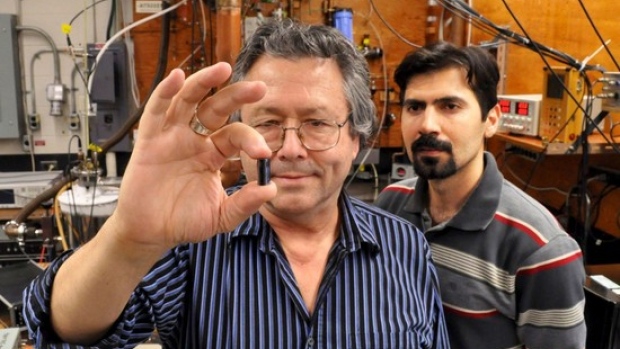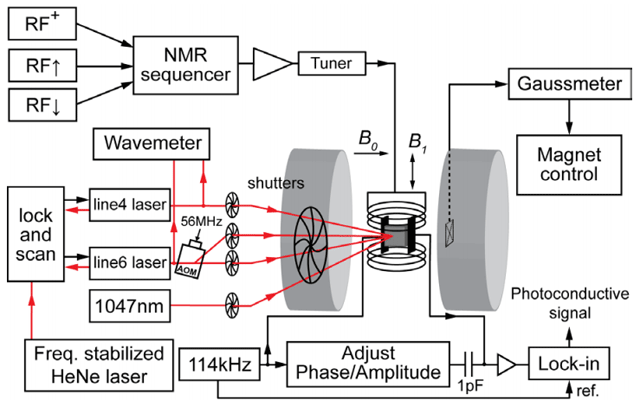The qubit lasted 39 minutes at room temperature
The quantum computer has become a little closer to reality after an experiment by physicists from Simon Fraser University (Canada). They were able to maintain the state of qubit at room temperature for 39 minutes. This is a significant achievement, given that the previous world record was 25 seconds.

For this experiment, qubits were obtained from phosphorus atoms embedded in a very pure silicon crystal (pictured) by bombarding them with magnetic pulses to cause quantum superposition.
 Qubit is a key component of a quantum computer. Due to the unique property of qubits, quantum superposition, the computational ability of quantum computers in some problems will be exponentially higher than that of binary ones.
Qubit is a key component of a quantum computer. Due to the unique property of qubits, quantum superposition, the computational ability of quantum computers in some problems will be exponentially higher than that of binary ones.
The inability to work with qubits under normal conditions was one of the main obstacles to the practical development of quantum computers. More than half an hour at room temperature is more than anyone could have expected, and is quite enough for some practical tasks. True, for the generation of qubits and for reading information from them, so far, in the aforementioned experiment, cooling was still carried out to approximately absolute zero. One of the authors of the experiment, Stephanie Simmons from Oxford University, says that it is theoretically possible to read and write at room temperature too: “This is more an engineering than a scientific task,” she said.

Installation diagram for recording and reading qubits from phosphorus atoms in a silicon crystal
To increase the reliability of reading information from phosphorus atoms, about 10 billion identical qubits were created. Scientists have yet to find a way to read individual different qubits in such a physical container.
With the availability of technologies for reliable quantum teleportation of qubits, it is possible to design quantum computers on silicon chips. Now there is hope that someday they will work at room temperature.
Although quantum computers exist only in theory so far, a high-level programming language has already been created for them, so now you can design software simulators of quantum computers and write software.
The results of an experiment at Simon Fraser University are published in the journal Science (original article , free viewing ).

For this experiment, qubits were obtained from phosphorus atoms embedded in a very pure silicon crystal (pictured) by bombarding them with magnetic pulses to cause quantum superposition.
 Qubit is a key component of a quantum computer. Due to the unique property of qubits, quantum superposition, the computational ability of quantum computers in some problems will be exponentially higher than that of binary ones.
Qubit is a key component of a quantum computer. Due to the unique property of qubits, quantum superposition, the computational ability of quantum computers in some problems will be exponentially higher than that of binary ones.The inability to work with qubits under normal conditions was one of the main obstacles to the practical development of quantum computers. More than half an hour at room temperature is more than anyone could have expected, and is quite enough for some practical tasks. True, for the generation of qubits and for reading information from them, so far, in the aforementioned experiment, cooling was still carried out to approximately absolute zero. One of the authors of the experiment, Stephanie Simmons from Oxford University, says that it is theoretically possible to read and write at room temperature too: “This is more an engineering than a scientific task,” she said.

Installation diagram for recording and reading qubits from phosphorus atoms in a silicon crystal
To increase the reliability of reading information from phosphorus atoms, about 10 billion identical qubits were created. Scientists have yet to find a way to read individual different qubits in such a physical container.
With the availability of technologies for reliable quantum teleportation of qubits, it is possible to design quantum computers on silicon chips. Now there is hope that someday they will work at room temperature.
Although quantum computers exist only in theory so far, a high-level programming language has already been created for them, so now you can design software simulators of quantum computers and write software.
The results of an experiment at Simon Fraser University are published in the journal Science (original article , free viewing ).
